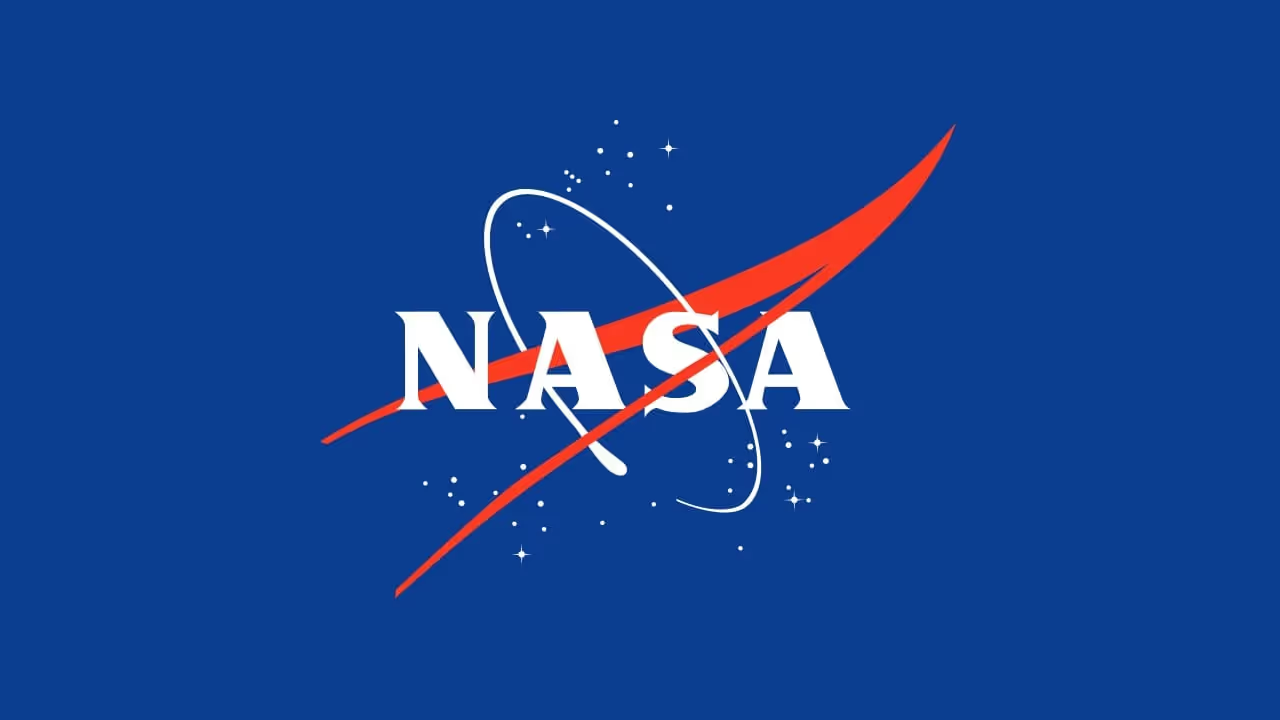There is a big difference between NASA and other government agencies and business organizations: The employees undeniably have one thing in common - a love and curiosity for the unknown cosmos.
According to its mission statement, “the National Aeronautics and Space Administration (NASA), is responsible for unique scientific and technological achievements in human spaceflight, aeronautics, space science, and space applications that have had widespread impacts on our nation and the world”.
A few interesting facts and data about NASA:
- NASA plans to spend $23.3 billion in fiscal year (FY) 2021. Compared to last year, this represents a 3% increase. Due to the pandemic and numerous debates, Congress only accepted the budget until three months into the fiscal year.
- $451 million goes to commercial and scientific exploration of the Moon, a 50% increase over FY 2020. The budget is being significantly increased by 2024 to support crewed lunar landings.
- Although NASA is a non-profit government agency, if they were a traditional private business, their annual budget would skyrocket them on the Fortune 500 list, between Duke Energy and Plains GP Holdings.
- More than 17,000 people work for NASA directly, and even more experts as contracted freelancers.
- NASA and insurance companies refused to offer life insurance to the Apollo astronauts, so they signed 'insurance autographs' before launching. If they died, it was hoped that their autographs would be of equal worth to insurance compensation.
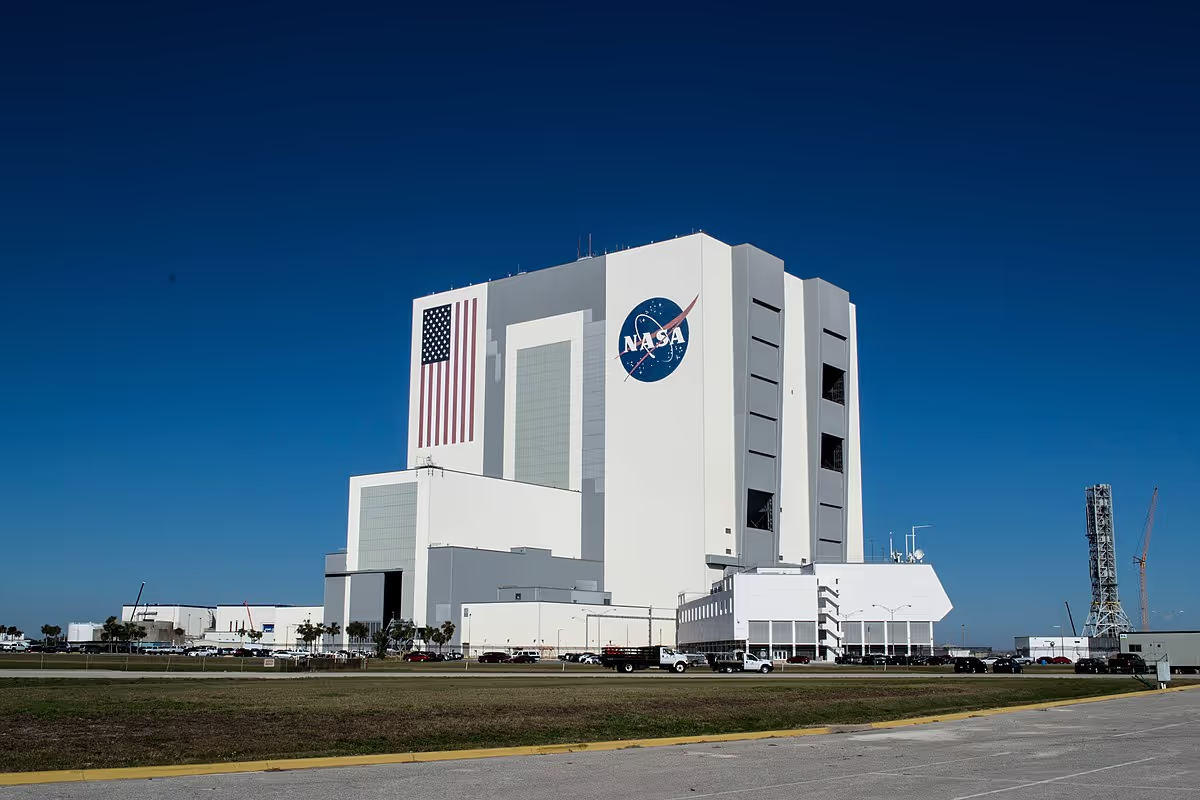
NASA and the Space Race
After the launch of Sputnik, the Americans responded to the Cold War challenges by establishing a center to do serious scientific work in addition to various expeditions and programs. The first and biggest impetus for the creation of a space agency came with the news in the United States on October 4, 1957, that the Soviets had launched the Sputnik-1 satellite.
On Friday, October 4, 1957, at 10:26 p.m. Moscow time, the world's first satellite, Sputnik, was launched from Soviet Central Asia, Moscow Radio reported on the major scientific advance. The Times shared how the event was received in American scientific circles: A cocktail party was held at the Soviet Embassy in Washington, where the guests, 50 scientists from 13 nations, attended a conference on rocket and satellite activities as part of the International Geophysical Year. The Times correspondent was called to an important telephone conversation and then hurried back, whispering something in his compatriot's ear. A minute later, Dr. Lloyd Berkner, an American geophysicist, was addressing the audience, "I have an announcement to make. I have just learned from the New York Times that a satellite is orbiting the Earth at an altitude of 900 kilometers. I want to congratulate my Soviet colleagues on their achievement." This evening is known in American history as Sputnik Night.
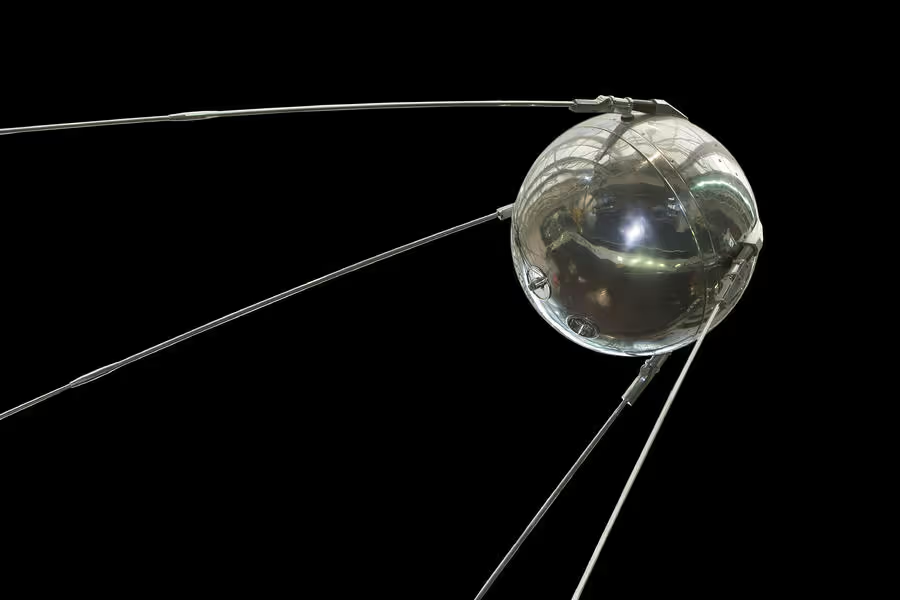
The US was also preparing for its own satellite launch, but they weren't ready. Nevertheless, they also launched a satellite, Explorer-1, on January 31, 1958. As a result, the United States accelerated its space program and in the summer of 1958, President Eisenhower signed the Act creating NASA, effective October 1st.
It is worth recalling some of the founding goals:
- To increase human knowledge of space and atmospheric phenomena.
- To make air and space vehicles more useful, safe, and efficient.
- To create vehicles that can transport instruments, equipment, supplies, and humans into space.
- Explore and study the long-term benefits and advantages of aerospace for peaceful and scientific purposes and identify potential problems.
- Ensure U.S. leadership in aerospace, space exploration, and space technology through peaceful activities in and beyond the atmosphere.
The original NASA logo was designed in 1959 and created by James Modarelli, the director of Lewis Research Reports.
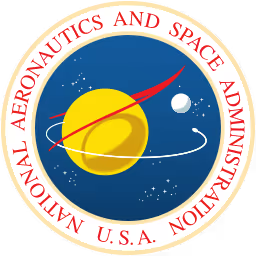
Key Takeaway #1: Clear vision is even more important for government organizations
Although the founder of NASA, President Eisenhower, probably viewed the space agency only as a means to technologically overthrow the Soviet Union, NASA still had been created with a clear vision and mission in mind. There has been no other government agency in history with as firm, future-proof, yet progressive vision as this organization.
If you envision an end goal for your business that goes beyond making a profit, the organization can develop a healthy company culture and way of working around that idea. If it is inspiring enough, you will see that profit and brand awareness, as well as the best talent, will follow.
Thinking in programs - Mercury & Gemini
Fight against the Soviet achievements in space
NASA began the Mercury Project to send a man into space and had no secret intentions of going to the moon. But despite all their efforts, the United States had to experience the "second Sputnik Disgrace" on September 12, 1959. The Soviet space probe Luna 2 reached the moon and crashed, followed by Luna 3, which was launched on Sputnik's second birthday, orbited the moon, and then released photos of it. The US lost another battle.
The next big event in the space race was when Yuri Gagarin became the first man to fly into space on April 12, 1961. This time the Americans were only just behind. On May 5, Alan Shepard made a successful "space jump" (i.e., he reached space in a ballistic orbit but did not orbit the Earth because his speed was too low), and 15 minutes and 22 seconds later he returned to earth landing in the Atlantic Ocean. The United States claimed this as a major achievement, although the Soviets had accomplished this 23 days earlier. In the book about the life of Alan Shepard (Thompson, Neal; Light This Candle: The Life and Times of Alan Shepard) we learn that as proud as he was of his achievement, the American astronaut was frustrated that NASA Gagarin was ahead of him due to the lengthy testing (Shepard's flight was originally scheduled for December 1960). As he said of the Soviets, "they were in our clutches."
To give a firm and straight answer to the Soviet advancement in space technologies, NASA shifted to a program-based approach.
The Mercury Program
.avif)
As the first United States manned space program, Mercury was an important milestone. It was conducted by NASA between 1959 and 1963 and included twenty automatic test flights with or without humans and six flights with astronauts in space. The main goal of the program was to put a human in space for the first time in the world and to overtake the Soviet Union in the space race. The goals were later changed when the Soviets took the lead with the Vostok program and President John F. Kennedy announced the Apollo program; from then on, the Mercury program was designed to maximize the space experience.
The program began in October 1958 with the first informal announcement of the start of work (still at NASA) on 7 October 1958 by T. Keith Glennan, director of the newly formed space agency, and the official announcement to the American public on 17 December 1958.
Immediately after the internal announcement of the program, the requirements for the equipment, the infrastructure, the future astronauts, and the suppliers for the program were selected (following the American model, the development and manufacturing of the equipment were contracted out to private companies). A schedule of test flights was also established. Two main types of flights were planned: suborbital and orbital. The hardware for the two types of space flights were also selected: the newly developed McDonnell Mercury spacecraft was chosen for both flight profiles, the Redstone rocket for suborbital flights, and the Atlas rocket for orbital space flights.
The main goal of the program was not accomplished as Yuri Gagarin became the first space traveler on April 12, 1961, and Alan Shepard was not the first man into space, but the first American to do so. Later, on February 20, 1962, John Glenn made the first orbital flight (in the public perception, the first "real space flight") with Mercury-Atlas-6. Three more flights followed, culminating with Gordon Cooper on Mercury-Atlas-9 on May 15, 1963.
After the first manned flight, the Mercury program was transformed into a space exploration program in preparation for the moon landing, which continued in the Gemini program after its mission was accomplished.
The Gemini Program
The Gemini program was announced as the third initiative at NASA, yet second in terms of several flights to carry astronauts into space. Its ultimate goal was to support the Apollo program. In the 1960s, NASA tested the more complex space operations that would later be used on lunar missions. This series served to prepare astronauts for Apollo flights so that experienced crews could be sent on the more demanding missions to the Moon.
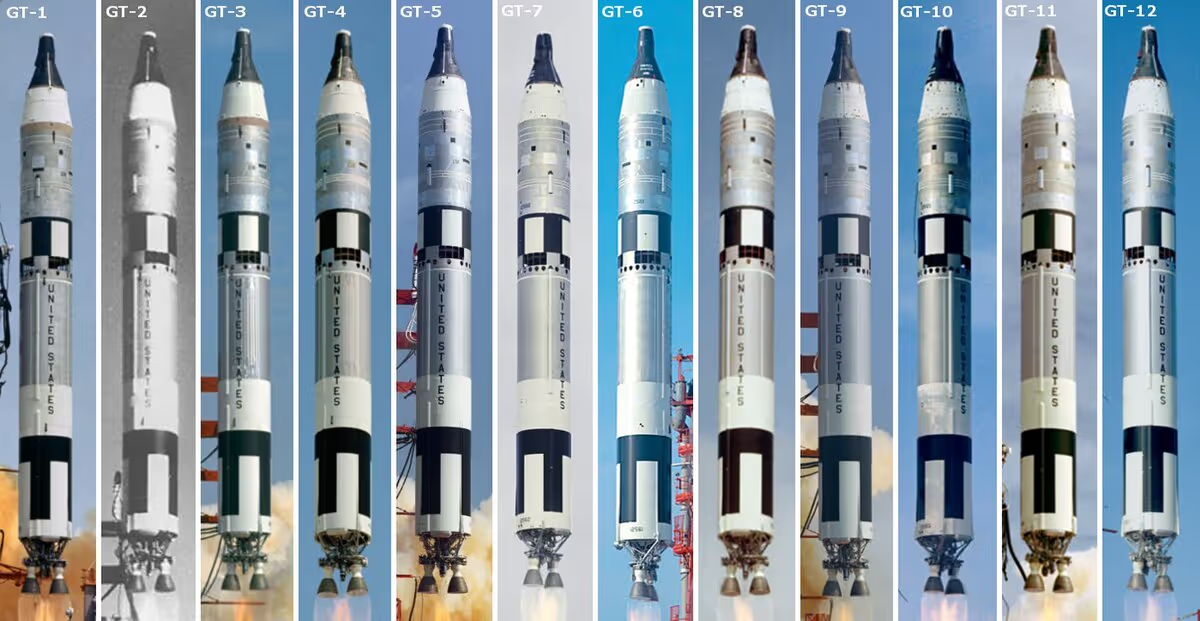
The Gemini program involved the development of new two-seat spacecraft with McDonnell Aircraft, utilizing Titan II launch vehicles to conduct two unmanned tests and ten manned missions. In addition, the new program resulted in a new crew selection system with much less stringent criteria than before. The flights were accomplished with minor glitches, involving the first spacewalk by a US astronaut and the first-ever rendezvous and docking of two spacecraft in space by an astronaut. As a result of this program, the United States made up for a deficit in the space race with the Soviet Union. The success of the program led to a future moon landing.
Key Takeaway #2: Program-based operation
The leadership of NASA decided early on to adopt a program-based approach to avoid having the visions of different management teams and administrations shuffled back and forth over and over again. This allowed the organization to focus on goals that were set for a 3-10 year period.
The key takeaway from the program-oriented approach of NASA is that your organization can also increase its effectiveness if your team understands what you are working toward and what your short- and long-term goals are. While setting company goals is the responsibility of leaders, team members should also be involved in creating roadmaps to achieve those goals.
Landing on the Moon
"That's one small step for man, one giant leap for mankind"
The Apollo program was the second manned space program of the United States and the third in terms of the number of flights due to the long preparation period between 1961 and 1972. The program had two goals: The primary goal was to put a man on the moon, and the underlying political goal was to reverse the lost position of the United States in the space race triggered by the website Cold War and restore national prestige.
%2520(1).avif)
The announcement of the lunar program came in a speech by President John F. Kennedy to Congress on May 25, 1961, and is considered the official launch of the Apollo program. In this speech, Kennedy set a deadline of 9 years for the completion. This goal was achieved on July 21, 1969, with the landing of Apollo 11 astronauts Neil Armstrong and Buzz Aldrin on the moon. They were followed by five other spacewalkers, bringing the total number of successful moon landings from NASA astronauts to six. Armstrong’s moon landing was preceded by four test flights with astronauts, while one unsuccessful moon landing was part of the program. In addition to the flights, the Apollo program was overshadowed by tragedy: During preparations for the first test flight, three astronauts, Gus Grissom, Ed White, and Roger Chaffee, died in a fire in their space capsule.
The flights were conducted using a special spacecraft system consisting of the Apollo spacecraft and a lunar module, the key to landing on the Moon, and a specially designed Saturn V and Saturn IB rocket. The program’s hardware was later successfully used in other space exploration programs, including Skylab and Flight Soyuz-Apollo.
The program was completed in 1972, and no human spacecraft has left low Earth orbit since. The rock samples brought back by the astronauts and the measurements made by the instruments used have revolutionized our understanding of the history and formation of the solar system and the evolution of the system Earth-Moon.
The United States spent more than $19.5 billion on the Apollo program.
How the Apollo program benefited NASA and the US economy
Humanity and the businesses behind the project made a giant leap by reaching the moon. In today's dollars, the Apollo program cost about $152 billion. A significant portion of the money went to partners NASA worked with to create the necessary technology for the lunar landing. The program involved companies like:
- Boeing (Saturn V Rocket),
- Honeywell (Stabilization and Control Subsystem)
- General Motors (Service propulsion fuel and oxidizer tanks)
- Velcro (Tie-downs)
- Aerojet Rocketdyne (Service Propulsion Engine)
- Beechcraft (Cryogenic Gas Storage)
- Pratt and Whitney later became United Aircraft (Fuel Cell Power Plants)
- Motorola (Data Uplink)
- Hammond Organ (which manufactured mechanical clocks and timing devices for the Apollo spacecraft).
The moon landing took place in a remarkably short period of time. Just eight years after Kennedy's promise, NASA put a man on the moon. The program accelerated technological development faster than it otherwise would have. The Apollo program enabled today's rapid prototyping and development methods. Avionics and communications technology have benefited enormously from the experience of companies like Honeywell and Motorola.
In addition to technological advances, space exploration also helped improve business practices. In an article in the February 1968 issue of Forbes, the manager George Mueller described how he restructured the large Apollo program into smaller separate "packages," each with a manager. This organizational structure, which was then adopted by all the partner companies, made it easier to keep projects running smoothly.
Costs of the Apollo program
- Apollo 11 alone cost $355 million.
- Saturn V rocket - the cost of launching astronauts to the Moon: 185 million dollars.
- A command module costing $55 million orbited the moon while Armstrong and Aldrin landed.
- The Eagle lunar module cost $40 million.
How did the Apollo program affect our daily lives in the present?
In the decades since the Apollo 11 mission, our knowledge of the solar system has expanded dramatically thanks to the efforts of 400,000 people. NASA faced many challenges that compelled the agency and its partners to invent and develop new technologies, many of which are now taken for granted.
Let’s see a few examples:
- Digital Flight controls: Apollo's digital fly-by-wire control system was perhaps the clearest demonstration of its contribution to advances in technology. It was unheard of at the time, but today it is integral to aircraft and even most cars.
- Food Safety: In planning space missions, NASA had to ensure that all food carried by astronauts was free of microbes that could cause sickness. To resolve the problem, the agency hired food manufacturer Pillsbury. The company developed a system that combined raw materials with processing environments, distribution, and people involved in the manufacturing process.
- Space Blankets: Another widely used byproduct of the Apollo program was a part of the spacesuits. Space blankets are probably best known for their inclusion in emergency kits and distribution at the end of marathons, but multi-layer reflective insulation can also be used for less obvious purposes.
- Quake-Proofing: As a result of the use of shock absorbers and computers in the Apollo era, buildings and bridges all over the world are now earthquake-resistant. To design the dampers that kept Apollo's Saturn V rocket's massive arms from swinging away, the company had to push conventional shock-absorber technology to the limit.
- Rechargeable Hearing Resources: The Apollo program continues to bring new technologies to market decades after the moon landing. The world's first rechargeable hearing aid batteries were introduced in 2013 based on extensive research conducted by NASA after Apollo.
Key Takeaway #3: Small steps towards success
Just as Neil Armstrong took small steps on the moon, NASA divided his programs and projects into small steps, which were then called packages. This is a similar approach to the Pomodoro technique, which strengthens focus by pursuing the smallest possible goals.
Whether you are organizing a day full of tasks or a multi-year project for your company, breaking it down into small tasks not only makes it less demanding but also much more transparent and trackable.
“Houston, we have a problem.”
What went wrong on the Apollo 13 mission
At 1:13 p.m. on Saturday, April 11, 1970, the 36-story Saturn 5 rocket lifted off from Kennedy Space Centre in Florida. Less than three hours later, Apollo 13 was hurtling toward the moon at nearly 37,000 km per hour. That was nearly ten times faster than a rifle bullet. But one anomaly escaped everyone's attention. Just before liftoff, a heating element in one of the oxygen tanks failed, damaging the insulation on some wires.
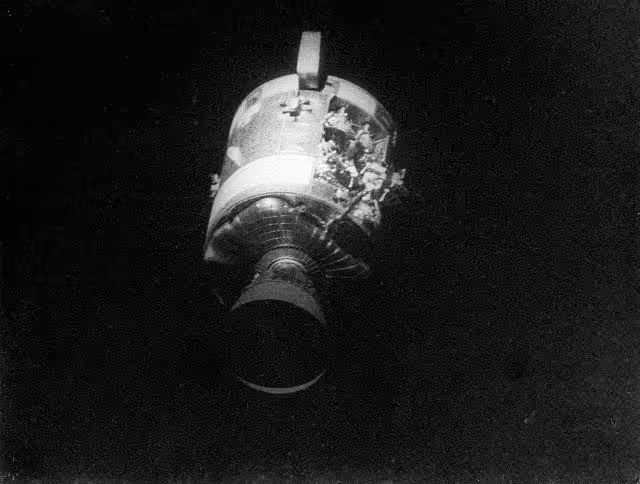
Apollo 13 consisted of two independent spacecraft. The command module, the Odyssey, was the nerve center of the system. The 6-cubic-meter aluminum cone housed the three astronauts on their way to the moon and back. Beneath Odyssey, in an engineering unit inaccessible to the astronauts, was the Odyssey's huge main engine and life support systems. Attached to the top of the command module was a lander called Aquarius, which had its own engine.
Tanks in the engineering unit supplied the oxygen that the astronauts inhaled and provided electrical power to the cells that powered the command module. The oxygen in the tanks had to be routinely mixed from time to time. But no one knew about the fatal hidden defect in oxygen tank two. An earlier fault in the sphere had brought bare wires into contact with pure oxygen gas. A single spark can be devastating.
Astronaut Jack Swigert acknowledged the order to mix and flipped two switches. The paddles spun in the tank for 16 seconds. Then a spark occurred: An oxygen tank exploded in the 56th hour of the four-day trip to the moon. Back on Earth, it was discovered that the only way to isolate the leak was to close the valves that supplied oxygen to the two fuel cells. However, since this was a permanent maneuver, the accident meant not only the loss of oxygen but as soon as the last fuel cell failed, there would be no more power and the engine would stop working.
The solution
There was only one way they could survive. They had to escape to the Aquarius, the lunar lander. The Aquarius had its own, separate battery, life support system, navigation system, and gyroscope. However, it was of limited use as a rescue ship. The lightweight design was only meant to carry two people for a few days of lunar exploration, which held significant risks for the 3 person crew.
On Earth, it was calculated that the oxygen supply of the command module would only last for 15 minutes. That was how long the crossing could take. Lovell was entrusted with the delicate task of transmitting the coordinates from the command module's computer to the lunar module. But they knew that the transmission would only be a temporary solution to their situation. If they were ever to reach Earth's atmosphere, they would have to return to the command module, the only part of the spacecraft equipped with a proper heat shield.
The first step was to change the pre-programmed orbit of Apollo 13. Otherwise, it would have gone backward past Earth. Lovell had to turn the ship in the right direction. But when he tried, the ship began to spin out of control. Lovell quickly found a solution: he learned to fly the lunar module without the command module on board. But now, with the dead mass at its apex, it reacted differently to his movements. The control was completely changed, and he had to learn to maneuver again almost from scratch.
The biggest problem was a lack of power. A radical energy-saving plan was devised to extend the life of the batteries. The crew had to reduce consumption to the equivalent of a kitchen blender. It was also vital to check the spacecraft's spatial position before firing up the engine. Only the Sun, the Earth, and the Moon could be identified. The plan was to instruct the computer to automatically rotate the spacecraft to point the telescope towards one edge of the Sun.
As the spacecraft was heading home, another time bomb started ticking. The three men exhaled carbon dioxide with every breath they took. The lander was equipped with air filters to remove carbon dioxide, but now three men were breathing in a space for two. Back on Earth, a method was improvised to connect Odyssey's angled air filters to Aquarius' round mounts. Exhausted astronauts made their life support equipment from duct tape, the cover of a manual, and an old sock.
The crew was forced to execute an emergency maneuver, but with manual control. The operation required the combined efforts of the three men. One man aligned with the Earth vertically, the other horizontally, while the third crew member engaged the engines. Finally, despite numerous obstacles, the Apollo 13 crew landed.
.avif)
Key Takeaway #4: What you can learn from the Apollo-13 crew
- Prioritize and communicate: NASA’s number one priority was saving the crew. After the first explosion, the goal of landing on the moon was abandoned.
- Practice is the key: It’s not enough to understand how something works or can be done in theory, practice can make things much more effective. In their case, it saved 3 lives.
- Weighing in and Manage Risk: NASA is known for understanding potential risks and thinking outside of the box to solve them - always with their greatest asset, employees, in mind.
From space shuttles to space stations The Space Shuttle program
The Space Shuttle (officially Space Transportation System, STS) was a space program designed to develop spacecraft for human transportation. It was the world's first design whose parts could be reused for more than one mission. The winged spacecraft (Orbiter) left Earth in a vertical position as a rocket and landed like a glider. Its tasks included replacing permanent personnel on the International Space Station, delivering supplies and station components, launching and servicing satellites, and various experiments and measurements in low Earth orbits.

A total of six space shuttles have been built, five of which have flown into space a total of one hundred thirty-five times since 1981. During these thirty years, two space shuttles were destroyed: Challenger in 1986 and Columbia in 2003. Thirteen Americans and an Israeli astronaut died in two of the worst disasters in the history of space exploration. The program officially ended on July 21, 2011, with the final landing of Atlantis.
Space Station #1 - The Skylab
Skylab was launched from Cape Canaveral on May 14, 1973, on the last Saturn V rocket. It was placed in a 56° inclination orbit at an altitude of 450 km. During the launch, one of the solar panels broke off and damaged the thermal shielding. The latter was repaired during later space missions. In 1973-1974, the space station crew consisted of three people. Each crew set a new flight duration record.
The main tasks of Skylab's scientific program were as follows:
- Developing cosmic methods for ground-based resource exploration. Gathering information for geology, geography, oceanography, environment, meteorology, agriculture, and fisheries.
- Study of solar processes outside the Earth's atmosphere.
- Experimental study of technological processes under space flight conditions.
- Testing of various equipment and instruments for long-distance flights.
Skylab orbited the Earth 34,981 times, and the space station re-entered the atmosphere on July 11, 1979, and burned up.
The International Space Station
The International Space Station (ISS) is a space station in low Earth orbit. It is one of the most expensive and largest space facilities in history. 16 countries are involved in the program: the United States, Russia, Japan, Canada, Brazil, and 11 ESA member states. The space station orbits the Earth at an altitude of about 400-420 km in low Earth orbit. It orbits the Earth every 92 minutes. In many ways, the International Space Station is an amalgamation of the previously planned independent space stations Russian Mir -2, the US space station Freedom and the laboratory European Columbus with a permanent human presence in space.

The ISS has been served primarily by the US space shuttles, the Soyuz, and the Progress spacecraft. Following the retirement of the space shuttle fleet, servicing was taken over by the European ATV, the Japanese HTV, and the Dragon and Cygnus cargo systems operated by two US private companies, in addition to the Soyuz and Progress spacecraft.
The space station is continuously being upgraded and scientific experiments are being conducted. As of 2009, the station has a permanent capacity of up to six astronauts. All permanent crew members were American or Russian until July 2006, when German astronaut Thomas Reiter joined the 13th permanent crew. In addition, the ISS has been visited by many astronauts from other countries and by several space tourists.
The name "International Space Station" is the result of international consultation. The first name proposed was Alpha Space Station, which was not accepted by the Russians. This name would have been the first, although the Russians had launched a series of space stations (Salyut) years before. The name Atlant proposed by the Russians was not accepted by the Americans because it was reminiscent of the continent of Atlantis, which had sunk into the sea and could be confused with the space shuttle Atlantis.
Key Takeaway #5: International collaboration
Although the race between the most influential countries in space dominated this sector, space was one of the first areas where cooperation began. The ISS is the best example of what happens when world leaders agree and steer their countries in the same direction.
This also applies to talent, an approach you can use in your business as well. Search all over the world for the most suitable talent, because with remote work, there are no borders anymore. Who knows, maybe your next employee can work from outer space.
Present Partners and Future Expectations
Toward advanced space technologies for the moon and further, NASA partnered with 17 US companies in 2020. Among other things, NASA and industry teams will create 3D printing systems for NASA's Artemis lunar exploration program, test a method for removing dust from solar arrays on planets, produce a rocket first stage recovery for a small satellite provider, and other tasks in line with the objectives set by the space agency.
SpaceX
SpaceX's Heavy Falcon launches the US space agency's mission to explore Jupiter's moon Europa. The $178 million contract is not the first such tender won by the Elon Musk company. It is a sign of NASA’s confidence in the California-based company, which has delivered astronauts and cargo to the International Space Station several times. In April, SpaceX was also the winner of the space agency's $2.9 billion bid to build a lunar lander for NASA's Artemis program. However, that contract was suspended due to lawsuits filed by competitors Jeff Bezos' Blue Origin and Dynetics.
SpaceX's reusable launch vehicle Falcon Heavy is the world's most powerful spacecraft of its kind and will make its first commercial space flight in 2019. Europa, Jupiter's fourth-largest moon, is slightly smaller than Earth's celestial companion and an important target for researchers who want to explore whether life exists on other celestial bodies in the Solar System.
.avif)
The future of space exploration leads us to Mars. Dozens of Soviet and American, European, and Japanese space probes (orbiters, landers, and Mars rovers) have been sent to Mars to study its surface, climate, and geography. Two-thirds of them failed before they could complete or begin their mission. In recent years, the missions Mars Climate Orbiter, Mars Polar Lander, Mars Observer, Nozomi from Japan, and Beagle-2 from the United Kingdom failed.
NASA launched two Mars exploration vehicles, Spirit (MER -A) and Opportunity (MER -B). The spacecraft landed and launched successfully, providing detailed panoramic images at three-week intervals. In 2008, the Phoenix spacecraft landed successfully. In 2021, Perseverance is NASA's most advanced Mars rover to date, and also the heaviest: on Earth, it weighs over a tonne, but on Mars, it will be "lighter" due to gravity differences, about the same as on our planet at 400 kilograms.
The rover will explore the planet's climate and geology, and also collect samples that can be returned to Earth. The robot may find evidence during its mission that life once existed on Mars. The one-tonne robot, which is about the size of an SUV, will spend an entire year on Mars - 687 Earth days.
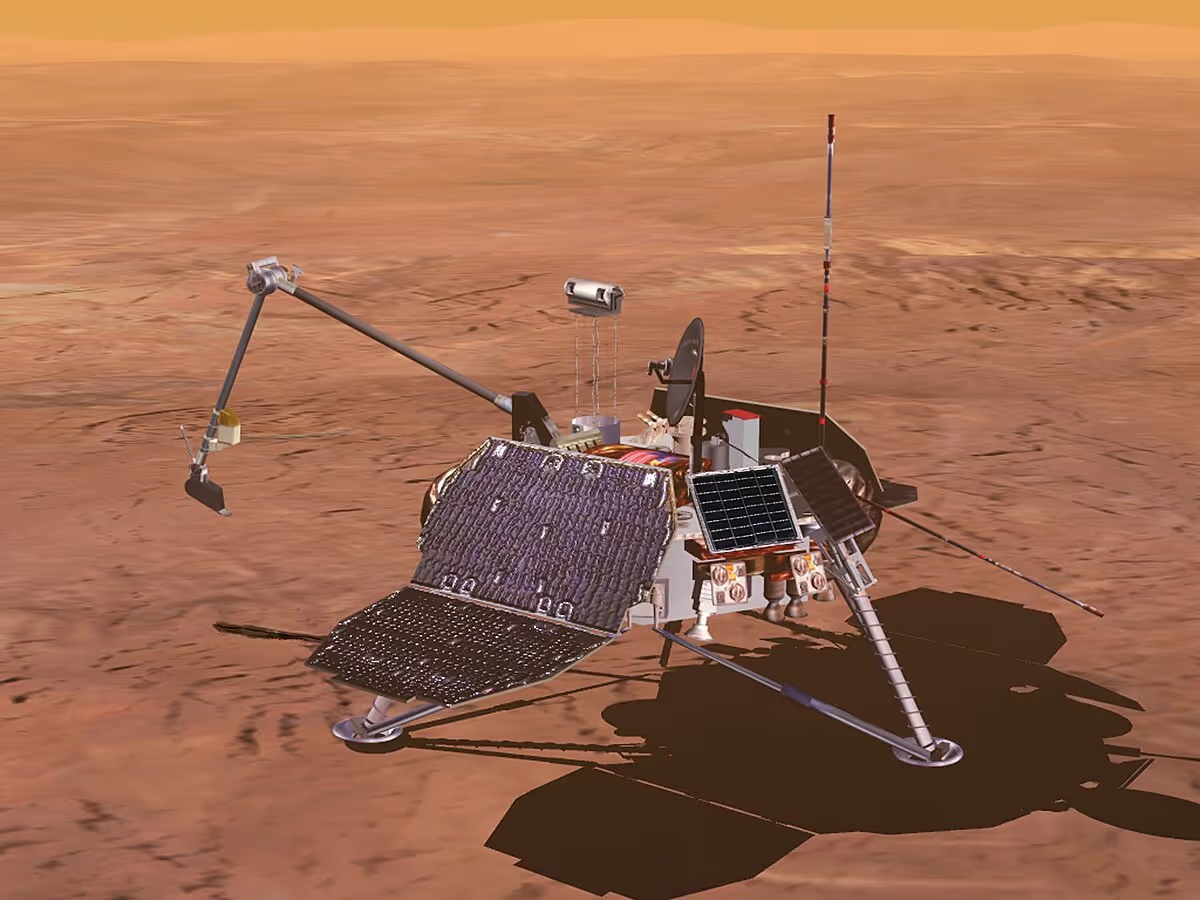
Key Takeaway #6: Risk-taking is sometimes necessary
There was a 40% chance that the Curiosity rover would survive a simple landing on Mars. The odds weren’t pointing towards ensured success. However, taking risks is necessary: If the team is able to discover evidence that Mars may have been home to life at some point in its history, the benefits of this mission are far too numerous to mention.
Risk means that there is a chance of failure, however, don't let your reluctance to bet stand in the way of your success. Bet on yourself by building a sustainable business.
Final thoughts and key takeaways of NASA’s story
Although NASA is not a traditional company, it has taught the world a lot about research and development, how to approach risky, life-threatening situations, and how to organize projects & programs. Throughout NASA's journey, there have been numerous failures, sometimes costing the lives of astronauts. But NASA has learned from these mistakes and has continued its commitment to space exploration.
Growth by numbers
Key takeaways from NASA’s story:
- A clear vision is a must-have: Different leadership teams, different programs, different administrations behind the scenes, and yet NASA has not lost its clear goal of space exploration, and more importantly, the organization has been able to develop it.
- There is always something to learn: In its 60+ years of existence, NASA has had numerous failures, from canceled launches to space disasters. Regardless of the event itself, the first question was always how to avoid it the next time. This led to NASA having the world's most stringent quality assurance and risk assessment procedures.
- Breaking down projects into packages: NASA was and is one of the most important think tanks that developed the foundations for modern working methods in science, business, and many other fields. Their recipe for success was to create multi-year programs, break them down into smaller projects, and continue the process until the smallest tasks become visible. These tasks are much easier to manage, track and oversee.
- Space agencies, including NASA, are among the most important organizations in the world as they work to understand our environment in space and on our planet Earth. In the first decade of NASA, we landed on the moon, since then we have learned more about the stars and the universe than in all of history before, and in the next decade, humans will land on Mars. Who knows what the future holds for us after that?


